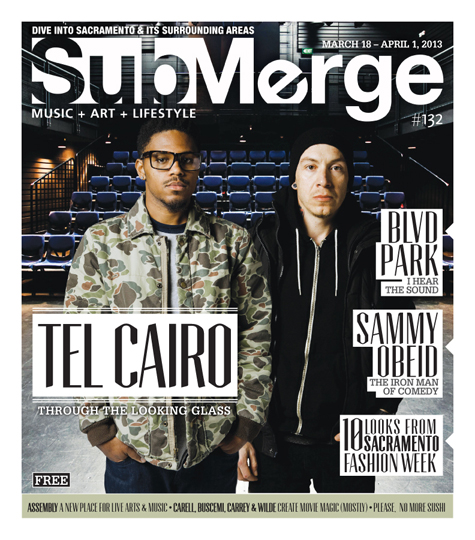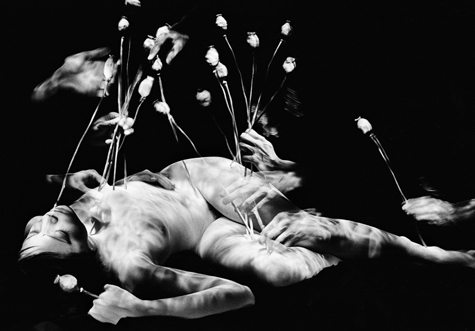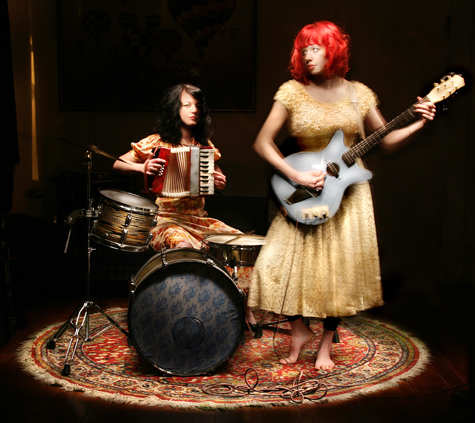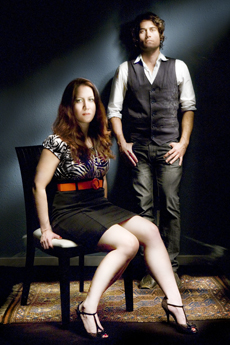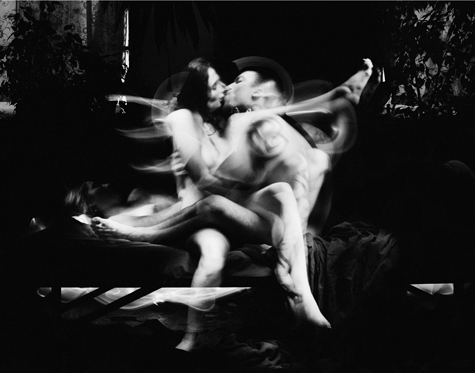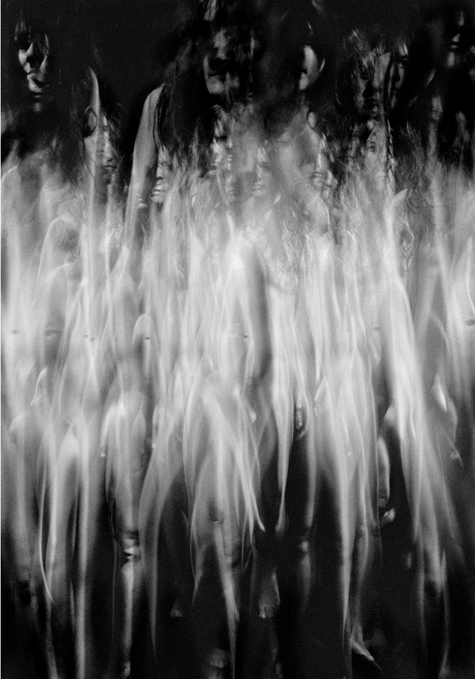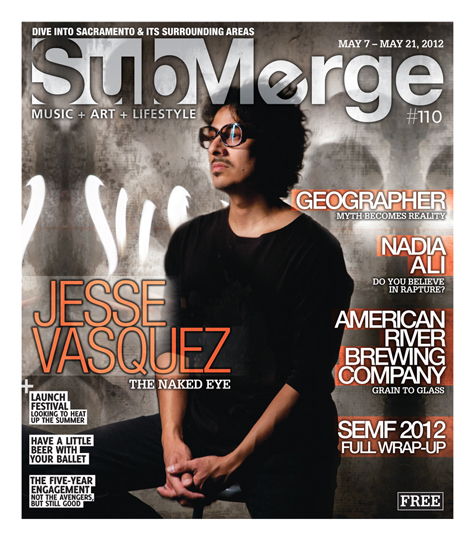One of the most unique and highly anticipated group art shows of the year is about to grace the walls of the WAL Public Market Gallery in downtown Sacramento’s bustling R Street Corridor. In the exhibit If You Do Me, I’ll Do You, 22 local artists are invited to create portraits of each other using a wide range of mediums after picking names out of a hat and getting to know each other a bit. Just some of the artists involved are (in no particular order): Sarah Marie Hawkins, Shaun Burner, Melinda Arendt, Waylon Horner, Gioia Fonda, Jesse Vasquez, Melissa Uroff Millner, Nathan Cordero, Bryan Valenzuela and others. The concept of the If You Do Me show can be traced all the way back to 2003 when Mike Rafter, Olivia Coelho and Tim Tinker conceived the idea for a Fool’s Foundation show. Bows and Arrows also hosted one back in 2009, and then WAL revived it in 2015, so that makes this year’s just the fourth time it has ever happened. There is an opening reception for the exhibit this Friday, Aug. 5, 2016 from 6–8 p.m. It’s free and all ages are invited to come out and enjoy the local creations amongst the group of artists. The exhibit will be up for two full months, all the way through Oct. 5, so you’ve got plenty of time to stop in and check out the work and peruse all of the other local businesses that make up Sacramento’s coolest indoor marketplace. Learn more at Walpublicmarket.com or Facebook.com/WALPublicMarket.
Tag Archives: Jesse Vasquez
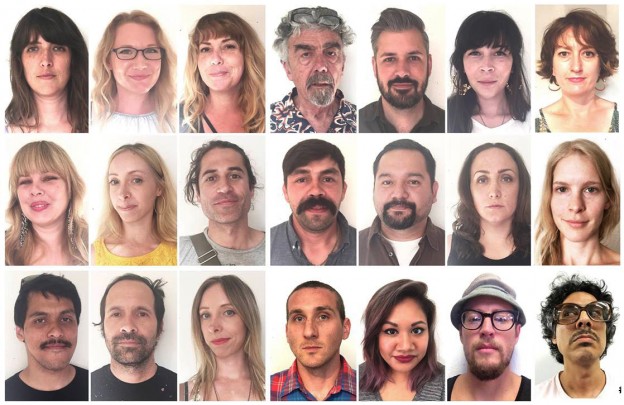
22 Local Artists Create Portraits of Each Other for “If You Do Me, I’ll Do You” Exhibition at WAL Public Market Gallery
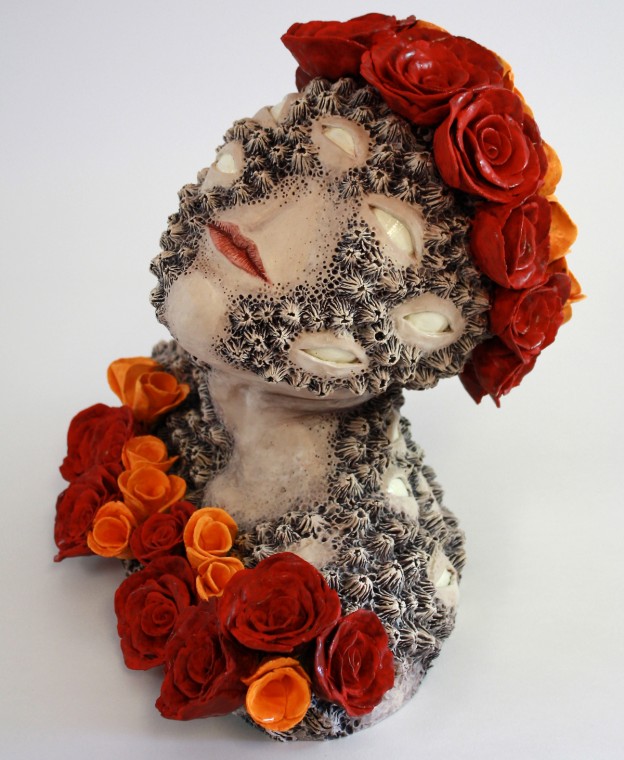
Changelings of Intuition: 1810 Gallery Displays the Dynamic Ceramics of Clarissa Pezone in her Exquisite Corpse Collection
“Baroque” is a term of towering richness. Often, we take it as a descriptor for any number of classicist tropes, those that bring to mind images of ornate and harmonious displays of decorative order. But there is another, antiquated half of the definition, taken from an old jeweler’s term referring to pearls of irregular shapes. It describes the mineral’s tendency to transgress any imposed notions of order, to twist into any shape its inner life compels it toward. In the natural world, the baroque is something bizarre, even grotesque. It is the art of the coral reef, where strange creatures grow, bloom, burrow and colonize across any hospitable surface.
I’m reminded of this when gazing at Black Widow, one of the newer earthenware sculptures by Clarissa Pezone. It is the torso of a woman, gesturing delicately upward in a state of repose, quite human-like, by way of the sea nymph or the arachnid. Her skin is blooming with plants, desert flowers, spiders and barnacles, and a dozen glowing-white eyes. It is an alien re-imagining of The Birth of Venus. Across the room, a cactus emerges from the protective cocoon of a human body; miniature vessels and mugs sprout rows of realistic teeth, jarring but elegant, like the anthropoid stand-in for pearls in an ancient inland kingdom.
Each item in the showing is startlingly realized, even though Pezone is still in the thick of her own artistic discovery. Exquisite Corpse, the artist’s latest exhibit at 1810 Gallery, is a feast of different techniques she has been working on over the past year or so, all to success. The few constants in the items on display are the medium—ceramics and the mastery of texture.
Some of her newer pieces eschew the phantasmagoria of her surreal work for a brilliant human realism, some of them the product of a workshop she recently took with world-renowned Tip Toland. Pezone is a true seeker, whose work is full of beauty, humor and otherworldliness in equal measure.
We took the chance to visit the artist and her creations in person at 1810 Gallery, where they will be on display until the end of the month. We learned about the goals, themes and imagery that keep her artistic gears furiously whirring.
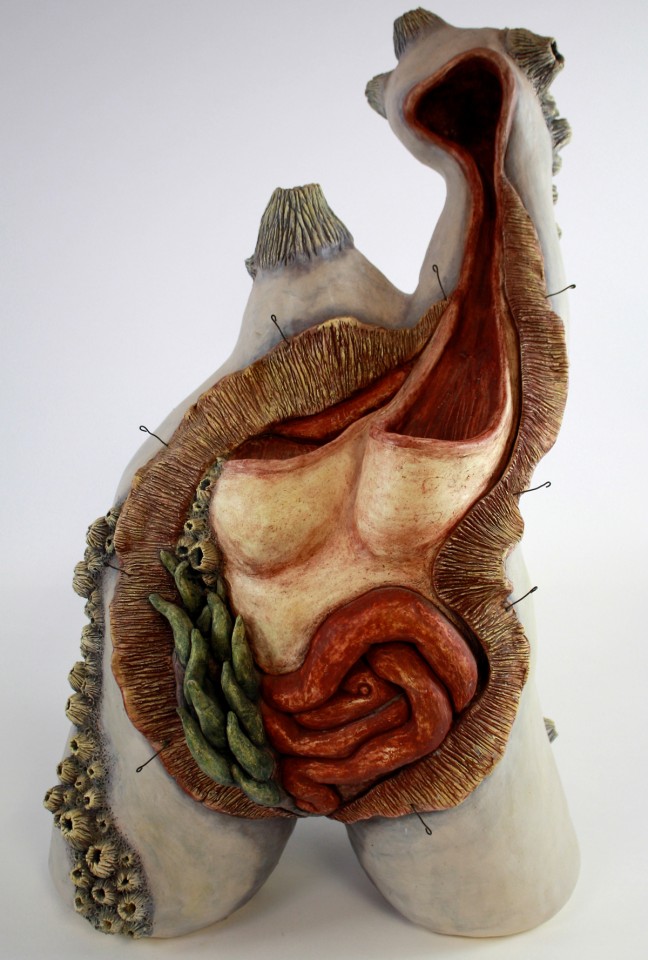
How did you get your start, what materials do you use and how would you describe your style?
I’ve been working with ceramics for about seven years. I got started at Humboldt State, kind of accidentally. I just went to a [sculpture] class and I really liked it. I use two different kinds of clay and firing processes, so the sculpture is first made with a low-fire sculpture clay, and then the high-fire stock is made of porcelain. I’d describe my style as surreal and figurative. I’m interested in texture and the process of making textures. In the work I’ve been making in the past year, I have been focusing mostly on surreal portraits—busts or half figures—that relate to the idea of growth and decay. I think there’s something interesting about an object being both beautiful and ornate, as well as grotesque, abject and off-putting. I am aiming for the gray area in-between.
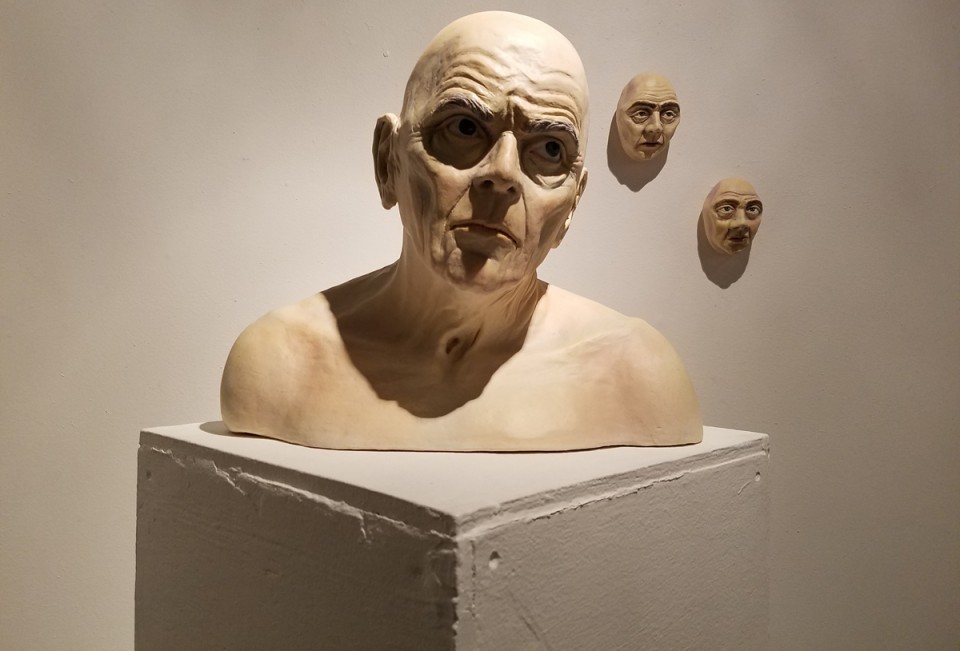
Photo by Jesse Vasquez
Do you have a favorite piece in Exquisite Corpse?
I’m torn between the last two I made before the show. This one [bust of a grumpy man] is my favorite because it’s a new technique I’d never tried before, which I did in a workshop with Tip Toland, who’s one of my heroes. I really admire her, and it was fun to build in a different style, too. The other ones are all built using coils, so they’re hollow, but this one I built solid and hollowed out afterward. I was trying something new and working from a model, which is much better than trying to imagine anatomy. My next favorite is that one [cactus lady sculpture], which is more surreal. That was my first time doing mixed media, putting the nails on the surface of the cactus. The clay had a mind of its own, too. I was building the body for her and it was kind of slumping a bit, because I was trying to build too fast, and then I thought, hmm … “I kind of want to make that into a fat roll [laughs].” I trust my instincts.
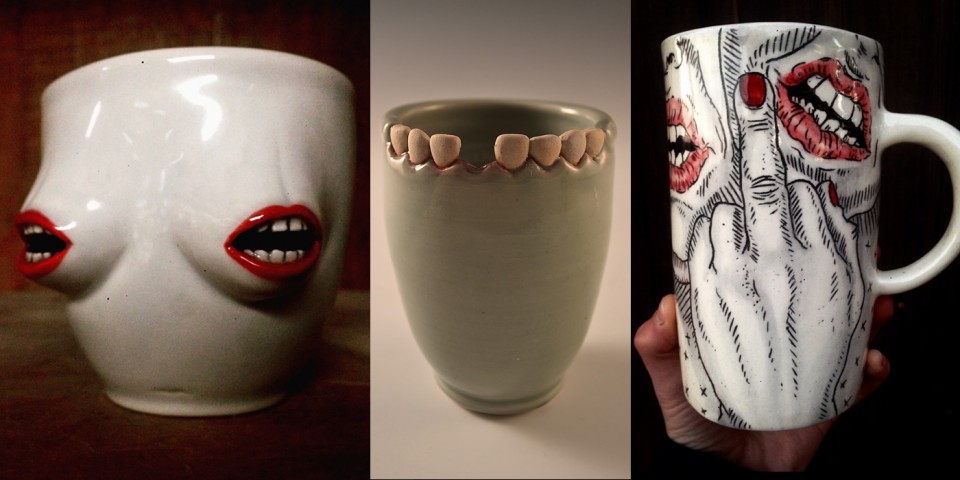
The items that stood out to me at first were these coffee mugs with a human teeth design. How did these come about?
The tooth mugs were one of the first things I started making in ceramics. The earliest ones I did were so shitty. They’re really funny to look at now. They don’t look like teeth—more like little piano keys. Just slowly over time, I started honing in on it. I just like teeth as objects, when you take them out of their context and put them somewhere else, they have the potential to look interesting. Also, when you drink coffee out of them, the coffee actually stains them like it would your teeth. It washes off afterward though!
How did you pick the title for your show?
Exquisite Corpse is a famous game that the surrealists used to play to generate ideas. It’s where you take a folded piece of paper and write or draw a story or picture fragment. You could draw a person, with the head, shoulders, and the rest of the body drawn by four different people, and come up with this weird monster of different elements, because you have no idea what was drawn by the person before you. The term just had a ring to it, and it seemed to make sense on some weird level, because it’s a bunch of wildly different works put together that might not make sense. They’re kind of alien sometimes.
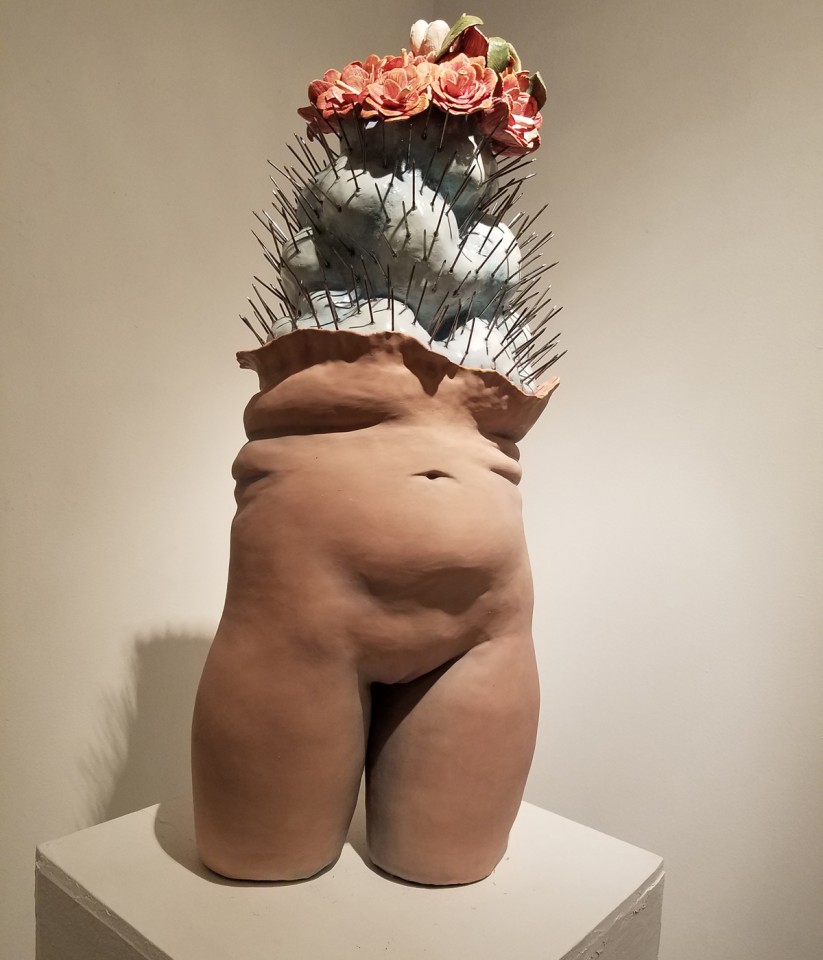
Photo by Jesse Vasquez
What draws you to the themes of anatomy, and being taken over by other life forms?
A lot of the images I look at are the anatomical drawings and medical cross-sections, especially with the older stuff, that was based more in drawing than in actually sculpting with three-dimensional objects. The “blooming” effect only came about in the past year, I think. I lived up north for about seven years, and for some reason I wasn’t making stuff with flowers or barnacles up there, and then I moved down here, and for some reason, the oceanic theme took over. I think it’s because I really admire the work of Jason deCaires Taylor, who makes cement casts of people and places them underwater—you might have seen them, like figures holding hands standing in a circle. I was looking at images of them after they’d been underwater for years, the amount of life that accumulated and how beautiful it was, so maybe that was part of the reason that my pieces started looking like they were being “taken over.”
What are you focusing on in your art in the near future?
Right now I’ve been thinking more of portraiture and mixed media. I’d like to continue to get better at making the figure better and more realistic. I’m just trying to build things solid, and really hone in on making things convincing as a human body. I’m not that interested in making hyper-realistic figures, like Ron Mueck, where you walk in and it actually looks like a human body, and you’re like, “Whoa! That’s disconcerting!” I still want it to look like it’s clay. I like the idea that it’s convincing enough so you can look at it and relate on a human level, but not on an uncanny level. I’ll still keep it surreal.
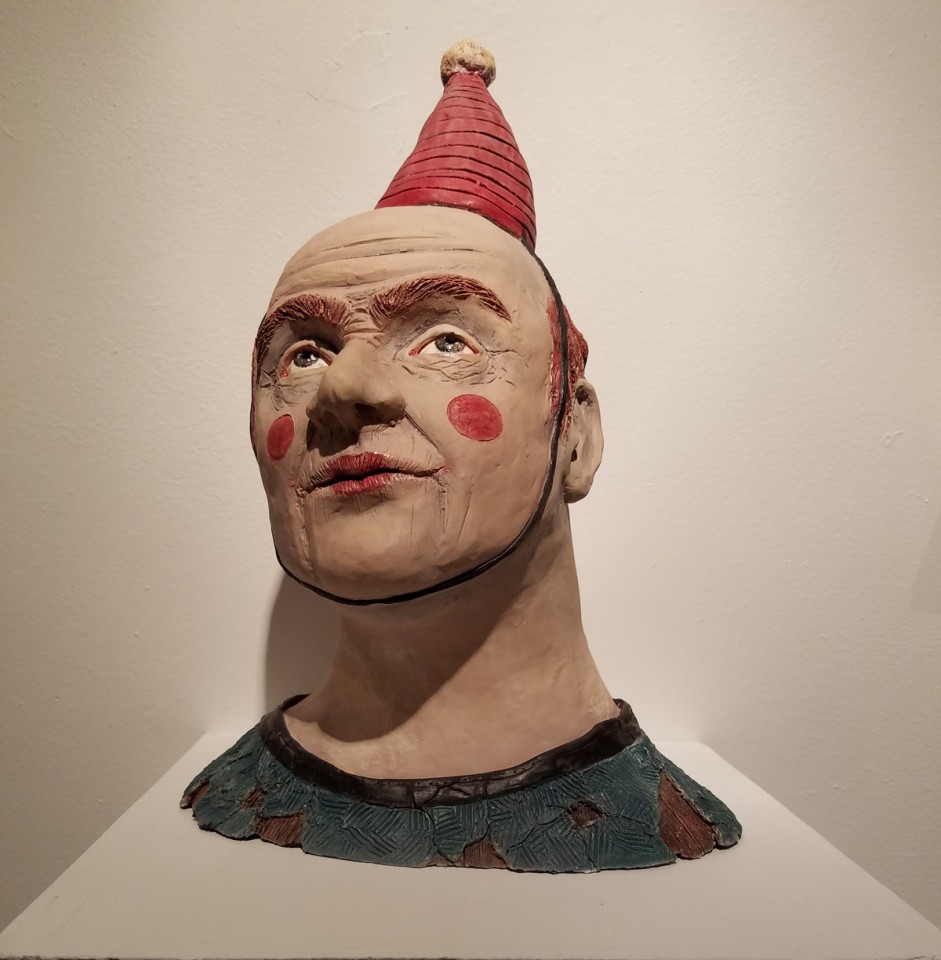
Photo by Jesse Vasquez
Stop by 1810 Gallery to see Exquisite Corpse for yourself while you still can. The gallery is located at 1810 12th Street in Sacramento. For more info go online to Facebook.com/1810gallery. Clarissa Pezone and 1810 Gallery will also be hosting a mug-making workshop at Panama Art Factory (4421 24th Street, Sacramento) on July 23, 2016. Tickets for this event are $35 and can be purchased through Mugworkshop.eventbrite.com. For more on the artist, check out her website, Clarissapezone.com.
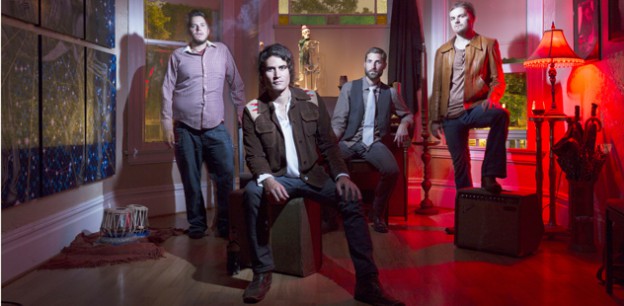
SILKY, SMOOTH & BADASS
Exquisite Corps Release Their Sophomore Album, Vignettes
Exquisite Corps’ debut, self-titled album hits like an orchestral tidal wave, then sweeps you up with an unconquerable undertow. I had no idea who they were when I stumbled into a show they played last summer at the now-defunct Luigi’s Fungarden, but by the time the show ended, I was happily overtaken by cello and violin crescendos swirling above the swelling pulse of melodic and melodramatic rock.
So when I heard that they had ditched the strings on their sophomore album, Vignettes, I shook my fists at the sky and deplored, “WHY?!” as their symphonic rock quality set them apart in our local live music scene. Then I took a listen and quit tripping.
A major departure from their first record, Vignettes has a stripped-down, pounding and sometimes psychedelic pure rock ‘n’ roll sound that is more than welcome to invade my eardrums anytime. It’s more laidback, and could make a great driving or party time soundtrack—whereas Exquisite Corps was intense, passionate and dark. The impressive versatility of Exquisite Corps, coupled with their synchronous, enveloping live performances, makes this band one of my favorites out of Sacramento.
I met up with Bryan Valenzuela (vocals/guitar) and Robby Dean (drums/vocals) of Exquisite Corps to talk about their new album and their plans for its release show—taking place at the Witch Room on Saturday, Sept. 20, 2014.
For those readers out there that don’t already know, can you give us a brief history of the band?
Bryan Valenzuela: We’ve all been in other bands for years, but this band started out as a duo, with a cello and just me singing. We quickly went from that to a quartet with a rotating cast. Then we went from that to a full-blown sextet with a cellist and violinist. And then, sort of pared that down, and are falling back into the rock ‘n’ roll life.
I’ve seen you play live before and loved the string element. It was rad having a cellist and violinist. So why did you forego the strings on the new record?
BV: So when we put that record out, almost two years ago now, right after that we started touring a lot; and like, you know, you start touring, and certain people aren’t able to go on the road for long, and people start being able to come and do certain shows but not be able to go for a longer stint, so I think it was just a pragmatic thing. At that point, we started maneuvering the songs we had and writing new songs based on the lineup that we could take on the road.
Robby Dean: It kind of just evolved.
So are the string sounds on the new record now achieved via the organist?
BV: Kind of, a lot of that full sound that you can get from a string section comes from the organ.
RD: We still bring the string players to some of the big shows.
BV: We’re doing a show for our record release at the Witch Room on Sept. 20, so we’ll have the full strings for that show. But writing a new record, you want to actually represent what you can take to L.A., San Francisco…
RD: Yeah, this record is more of what we’ve been doing as a four piece. Our band goes anywhere from a trio up to a sextet. This new album was more of a collaborative process. On the first record, Bryan wrote the songs and the other parts including the strings were written around that, but this record we wrote the songs together collaboratively more.
BV: Since we started being more of a rock ‘n’ roll band rather than this very orchestrated band, it sort of evolved into everyone contributing to arranging the songs. It started from this more rhythmic, more raw sound. We tried to focus a lot on the drums and capture that rawness, rather than a refined thing.
It has this psychedelic, rock sound to it for sure. You’ve also gone with a different recording studio—it was Scott McChane on the first record, and the new one was Ira Skinner, so is there a specific quality in Ira’s work that helped capture the new sound you were going for?
BV: It sounds more of like, a live thing. There were only a couple takes on vocals, for example. We went to Ira basically because of how he makes drums sound really good. He’s a drummer, and a great drummer sound engineer.
RD: The album still sounds tight because we’ve already been playing these songs for a year on the road, so we just went in there and laid it down.
BV: I think that’s just kind of where our tastes evolved to after playing out of town a lot and not having the strings all the time…
RD: Yeah, you kind of start carving out how you’re going to approach things. We’re really inspired by people like Beck and Badly Drawn Boy where every album is different and you never know what’s going to come up.
BV: The awesome element of Beck is that he’s able to be pretty eclectic—he’s not pigeonholed.
RD: We’re always going to be a rock band, with elements of rock ‘n’ roll, but it could go anywhere from more grandiose, to more stripped down, to acoustic, to electric,
to psychedelic…
BV: Unpredictability is kind of nice.
How are you guys making a living selling records and touring?
BV: We’re super DIY. We sell records out of the back of our cars. Right now, we signed a contract with a licensing company, and that’s a step in really trying to make a living. The licensing company is trying to place our songs in commercials, all that kind of stuff. We have all our stuff up on iTunes, Bandcamp… We definitely sell physical copies. A lot of people still like that. But that’s not necessarily the way the world is going.
Are you planning on doing a tour with the release of the new album?
BV: We’re still finalizing details, but we are planning on carving a route out down the coast…
RD: We’re always playing around California, you know… from San Diego to the Bay, to Nevada City, Sacramento, Chico and coastal towns in-between.
Do you have a favorite local venue, these days?
BV: We haven’t played Witch Room yet, but it’s really cool. We’re excited to play there. We have a residency every first Thursday of the month at LowBrau, too. We’re not doing it this month because of our release show, but next month, we’re doing it and it’s kind of the TBD kick-off party, it’s the night before the festival starts. The guys that run LowBrau are such good guys.
How would you guys describe the sound of the new album?
Pistol Pete (a close homie of the band who came along with Valenzuela and Dean to the interview): Cashmere.
RD: It’s very silky, but edgy, and empty…
BV: Silky smooth…
RD: Silky, smooth and badass.
For more information, visit Facebook.com/excorpsmusic.
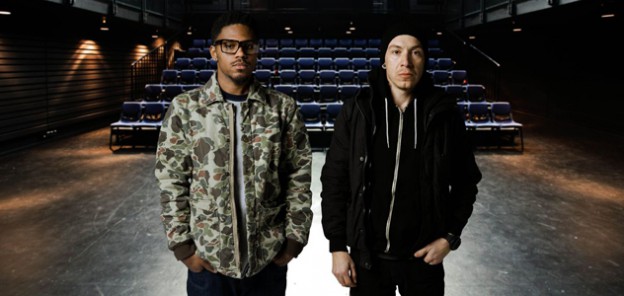
Beauty and the Beast
15 Years, 11 Tracks, 11 Vocalists, 2 Bandmates: Tel Cairo
Words by Joe Atkins
For the last 15 years Cameron Others and 7evin have been working on their material, laying out beats, loops, archaic recordings of bedroom beatbox compilations and reworking that material into new orchestrations. In the last two years it’s all come together, and now, as Tel Cairo, Cameron and 7evin are set to release their debut full length, Voice of Reason. The album itself has been part of the long process of self-discovery for these two electronic musicians. Their sound, their relationship to composition, their knowledge of technique and technology have increased with each singular endeavor, and the result is a precision track listing of rattling low-end bass and twinkling high-end melodies.
And I’ve yet to mention what, for me, is the most impressive part of the album: its list of local MCs and vocalists who dominate the lyric and lead portions on the majority of the project. It’s a list of past, present and future Sacramento stars, artists whom have been working the scene for the last two decades trying to lift the city up with their own talents and careers. There are individual appearances from Aurora Love, “This Is Not”; Agustus thElephant, “Music Box”; and Mic Jordan, “Electro Knock.” On “Twelve Paths Toward Movement,” Sister Crayon frontwoman, Terra Lopez appears alongside hip-hop local TAIS; Mahtie Bush spits verse after verse on the track “Illicit” and the unknown, yet powerful, Stephanie Barber holds down the hook. Lest we find ourselves stuck in the lady sings the hook cliché, Paper Pistols new lead, Juliana Lydell sings the verses to the high pitched chorus of Caleb Heinze, from Ape Machine and Confederate Whiskey; and Task1ne, Voltron reference and all, flows over the verses of “Evening Push,” before local legend Jonah Matranga gives his signature falsetto to the hook. It’s a list that’s both diverse and impressive, and it makes for an album that highlights the many dynamic qualities of music in Sacramento.
Breaking from some highly competitive Wii, 7evin and Cameron sat down with Submerge, and we talked about Sacramento, influences, genre, processes of songwriting and recording, skateboarding, musicianship, Ira Skinner’s beard and the talented slew of lyricists they worked with on the album. In addition, Submerge exchanged a few emails with the lyricists, and, likewise, we share their thoughts on working with Tel Cairo.
What brought you to Sacramento? What are the best and worst parts about this city?
7evin: I moved here about eight years ago to work with Ira Skinner, a good longtime friend. Sacramento has an amazing group of musically talented individuals. We like what’s going on here. The cost of living is amazing; you don’t have to feel so pressured. The bad part is that there is almost no monetary value for art here.
Can you describe your songwriting process?
7evin: A lot of times we start off with analog, a guitar, drumset, bass. We get in there and start doing electronics. We don’t do samples. We do our own tones and MIDI controlling. There’s always one part, and we shoot it to the next person until he can’t work on it anymore, and he shoots it back. We’ll meet once a week and we’ll work on that song. We made 32 tracks for this album and 11 made the cut.
What sort of influence did Ira Skinner have, working with him as a producer?
Cameron: Ira let us figure out who we were. He took all the things we’d been layering for so long, and we’d forgotten what we started out with, and made them sound amazing. Some of these things were already done. We’d put so much into it. We needed to step away a little bit.
7evin: He is so chill in the studio. He let us fumble around to find a niche, and the second he hears something that’s good, he’s like “Wait, go back! Let’s do that.” We have the first word, bounce it off to someone in collaboration; we get the second word, and Ira comes in; and we get the final word.
Cameron: In between there was also a lot of growth and learning on our side, with the programs.
Of the two of you, who’s the biggest perfectionist?
7evin: We’re never happy with it.
Art is never done. We just move onto another song.
Cameron: We look at things a little differently. I’ll hear things differently that he might not hear. Technically, I think he’s the perfectionist, making sure everything is lined up. I’ve tried to watch, and I’ll fall asleep for a little bit.
7evin: We tag team it, recording. I’m 20 percent deaf in my left ear. I don’t hear high end, I hear mid-tone and bass. You can see that and feel that live. [Cameron will] come in and stick this melody here. He brings the beauty to my dirtiness. I’m a gutter-punk; this guy comes in, and he’s playing 12-string guitar. We’re very similar but we’re like the Alice in Wonderland, Looking Glass Mirror versions of each other.
Cameron: We get inspired at the same time from different things. We get a feeling. It could be DJ Shadow, it could be anything, a country song; our creative juices start, and we just sit down and see what comes out. When we work together we balance each other’s ideas.
I know that every collaborator brings a different set of skills to the studio, the songwriting process. Who impressed you most while recording?
7evin: Mic Jordan is one of the smartest people in the world. He’s brilliant. Just kicking it, he’d expand our minds in so many ways. When he came in, we worked an experimental song; it’s not a typical hip-hop track. He rose to the occasion.
He has like four different cadences, and it’s beautiful.
Cameron: Jordan, for sure. Caleb [Heinze], I’ve known that dude for a long time, and I knew he could sing. The way he nails that chorus is genius.
7evin: He has a range that no male should have. We weren’t sure what to do with that track “Nirvana,” but Juliana [Lydell] approached it off of his vocal, like the ghost of the guy she lost her virginity to.
What was it like to work with Jonah and everyone else? How’d you get them to collaborate on the album?
7evin: They were all our friends, except for Jonah, though Jonah’s now friends and family. Jonah’s someone we looked up to, someone we’d seen as kids growing up, going to shows at the Cattle Club. We had mutual friends so I hit him up.
Cam sent over “Evening Push” and he just ran with it. He was so kind and gentle of a person to work with two guys he didn’t know. We sent a lot of emails backwards and forwards. We haven’t got a chance to do it live with him as far as performance. But we’re doing that on April 4, everyone on the album is performing. It’s never going to happen again. It’s like one shot.
We definitely took a Gorillaz approach with this. Terra [Lopez and Cameron] are damn near best friends. I knew Stephanie [Barber] from helping her and her sister with their restaurant, and that girl can sing. We locked her and [Mahtie] Bush in my bedroom with us, and it was like a Seven Minutes in Heaven kind of thing, writing a song on an SM58 microphone.
Stephanie Barber [who is quietly present during most of the interview]: It was really creepy and productive.
One of the ways I’d describe your sound is electric, post-grunge, skateboard culture, all grown up. You happy with that?
Cameron: I’m cool with that. That’s what I do every day, [skate]. Skate videos have helped me listen to different things. In old Toy Machine videos, Ed Templeton uses a lot of Sonic Youth. I watched them hundreds of times. It made me want to experiment with my own guitar.
Would you say your music belongs as the soundtrack to the cinematic build up of a riot or the post-riot moment of optimistic melancholia, where a new world briefly exists but won’t last over time?
7evin: Afterwards, definitely. After everything’s been destroyed, and we’re rebuilding. There’s healing process in these songs. There’s hope. Your heart gets demolished, but you can grow and
move on.
Tel Cairo will celebrate the release of Voice of Reason at Midtown BarFly, 1119 21st Street in Sacramento, on April 4, 2013. This will be perhaps your only chance to see 7evin and Cameron Others share the stage with all of the vocalists who appeared on the album. For more info on the show, go to https://www.facebook.com/telcairo, or hop over to Midtown BarFly’s Facebook page, https://www.facebook.com/MidtownBarFly.
4 Questions with Mic Jordan, Mahtie Bush, Task1ne and Juliana Lydell!
How was it to work with 7evin and Cameron on your track?
Mic Jordan: They played me a skeletal version of the song they wanted me on and set me loose with no real guidelines. I definitely had input into its final outcome, but I also felt like, “OK, everybody here knows what they’re doing, they trust me do my thing lyrically, so I trust them to do their thing sonically.”
Juliana Lydell: They’re really open-minded, supportive, and enthusiastic. Creating with them is a lot of fun.
Can you tell me about the process, e.g. did they have the song done and let you do vocals over it, or was it more of a collaborative process where you aided in the musical composition?
Task1ne: They trusted my expertise and let me just record the track like how I usually do it with no problems. It was a blast. I fell in love with the track instantly. I’m a fan of all types of music, so it was great to get to experiment on something different.
Mahtie Bush: They built the track right on the spot, and as they did that I was writing to the beat. It just happened; we were on the same page. The vibe was ill.
What makes Tel Cairo vital to the local scene?
Mic Jordan: The fact that they are bridging the (artificially separated) electronic, alternative and hip-hop communities. Ultimately, what sets Tel Cairo apart is the fact that their music defies easy categorization while somehow sounding authentic no matter what territory it’s venturing into.
Juliana Lydell: How excited they are, how much they believe in community, and what a team effort they make out of the act of creation. They think big. It’s contagious.
How long until Tel Cairo achieves world domination?
Mic Jordan: Who’s to say they haven’t already?
Task1ne: A better question is, which one is Pinky and which one is the Brain? Inquiring minds would like to know.
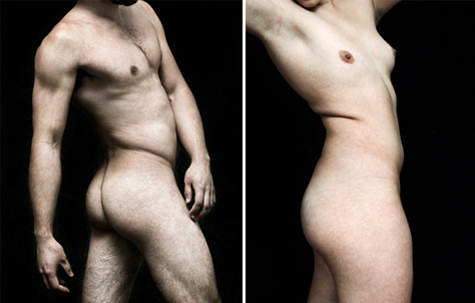
Light In A Dark Place
Photographer Jesse Vasquez celebrates the human form in his third series, Stone
From the ruins of a tanked economy arises a booming art scene. When Philadelphia had little else to offer, the city turned to its creative minds, dumping money from its coffers into the arts. So it goes–a downward spiral can only last so long before things start looking up.
This is the experience freelance photographer Jesse Vasquez remembers. Nine years of artistic exposure in this almost bankrupt city provided him all the ripe conditions needed to develop his first body of work before returning to Sacramento. He found dancers and willing subjects to photograph, and had unlimited access to a three-story house replete with lavish furniture and a roof garden of exotic plants to use for props.
He completed the latter half of that body of work in Sacramento. The result was an impressive portfolio of black and white photos: capturing the rocking motion of an unclothed couple’s entangled embrace on a couch, a hand moving a flower across a naked body, and a nude pregnant woman seated beneath a halo of moving lights. In each photo, Vasquez mastered the art of stretching time.
Years later the Sacramento native is preparing to show his third major body of work, Stone, at the Milk art gallery in Midtown this month. This work also focuses on the naked body. Yet while his older pieces communicate the experience of passing through the body, Stone approaches the nude body in a very graphic way, he says, focusing on shape, form and solidity.
Jargon rolls off Vasquez’ tongue fluidly as he describes to Submerge over beers his experience as a photographer and why certain subject matter appeals to him.
His compositions using nude bodies are arguably his most stunning pieces of art. To understand where he is coming from, understand his frustration with the way people conceive the human body in art. People are more receptive to nude bodies in other art forms, he argues, yet when presented with a photo of a naked body, they pay little attention to tones, lines or composition.
“[There] is an utter childishness about standing in front of a picture of a naked person,” he says. “People have a real fantasy life about a nude body depicted in a photograph.”
It seems strange, he says, considering photos are nothing more than pigments arranged on a piece of paper, two-dimensional representations of light reflecting off of something, in this case bodies.
“Everybody has a body,” he adds. “Everybody interacts with the world through [their] senses.”
Vasquez shot Stone to reflect painterly and sculptural qualities. The photos focus on various sections of the human form: pale, powerful bodies contorted with arched backs. Yet, unlike the pristine, bleached sculptures that might come to mind, these are human bodies with muscle details and hair, their nuances exposed.
Like Philadelphia, Sacramento also played a role in his formative years as a photographer. It was in the bathroom of his drinking buddy’s apartment in Midtown where he got his first taste of a DIY darkroom, after all. Exasperated with Vasquez relentlessly tinkering with his gear, his buddy eventually gave him an old Pentax film camera, spurring Vasquez’ interest in photography. Vasquez soon enrolled in classes at Sacramento City College. That is where he experienced his “a-ha” moment, when he was asked to shoot an assignment by painting with light. The rest is history.
While you may not have seen his nude works, there is a good chance you have spotted the photographer’s work around town. In fact, if you have been a Submerge reader since its earliest years, then you may recall an image of Sacramento band Agent Ribbons on the cover of the first issue. It’s the one where the duo is posed stoically on a round throw rug, instruments in hand. Vasquez shot the photo. Otherwise, you may have seen his work while browsing Midtown Monthly or the Sacramento News & Review.
Perhaps the greatest advantage to being a freelance photographer is the access to unique experiences that comes with it, he discloses. He has attended Adobe conferences for marketing-related work, passed time in Berlin, Tokyo and Chicago. He has been a part of documenting Sacramento’s local music scene, including the likes of Ricky Berger, Mike Farrell, Phallucy and Exquisite Corps, in addition to Agent Ribbons. He has been asked to shoot political gigs, snapping shots of legislators stopping mid-conversation to reveal an effortless grin. As long as Vasquez holds a camera in front of his face, no one questions him.
What a dreamy existence, right? Not always. The reality that comes with freelance work is there is no steady income to rely on, and it’s a matter of waiting for customers to fork over cash. And if no one is interested in spending, then it can be a sorry day, week or month. In Sacramento, people are particularly reluctant to open their wallets for artwork, Vasquez says.
“You end up being like a soccer mom to your work,” he says jokingly, meaning he has to haul around his pieces from exhibition to exhibition until someone buys something.
Still, he spends his time doing what he loves, making art.
“Art is my commitment that I will never murder anybody,” he says.
This may sound odd at first, but as Vasquez explains, it rings true for him. Prior to his infatuation with photography, he was within days of entering the Air Force linguistics school in Monterey.
His recruiting officer reassured him, “You’re not going to have to shoot anybody… You’re just going to translate and pass it on.”
That’s when he had an epiphany, Vasquez remembers. Even if he wasn’t the one toting a gun, he was still part of “the machine,” only he was passing on the burden of killing to someone else.
“The entire organization is designed to enforce your will on other people, other cultures,” he says. “It’s just spreading out the responsibility [so] that nobody feels too bad about it.”
So the day before he was supposed to leave, he instead told his recruiter he wasn’t going. He signed a paper, never looked back and has lived as an artist ever since.
“Art is a conversation with whatever, with your materials, with your culture, your people,” Vasquez says. “Sometimes people buy it, sometimes they don’t buy it, but you spent your energy adding something to the world, versus trying to mash the world into the shape you agree with or coercing it to comply with your will.”
When cities are left in shambles, whether it is the result of bombs, zealous greed or dilapidated economies, we can only hope that there will still be artists left to shed light into the void.
Tons of Local Music Scene Photos at Bows’ January 2012 Art Show
For local music scene aficionados, Bows and Arrows’ January art show, titled Eye-Fi: A Retrospective of SN&R Sacramento Music Scene Photography, is one you will not want to miss. At the show’s opening, which is on Jan. 6 from 6 to 10 p.m., there will surely be a whole lot of, “Hey look, that’s so-and-so from such-and-such band,” and definitely a lot of, “I was at that show!” Featured photographers include Wes Davis, Amy Scott, Shoka, Jesse Vasquez, Nick Miller, Carlos Amaya, Don Button, Jon Hermison, Sean Stout, Steven Chea and more. Just some of the local artists captured by said shutterbugs are Ganglians, Appetite, Exquisite Corps, DJ Whores, Mahtie Bush, Kill the Precedent, Sea of Bees, Chase Moore, Dead Western, !!! and many more. At the opening there will be artwork for sale, as well as food, drinks and a live DJ. Bows and Arrows is located at 1815 19th Street. If you can’t make it to the reception, make sure you stop in before Feb. 2, 2012 to see the photos.
-J. Carabba
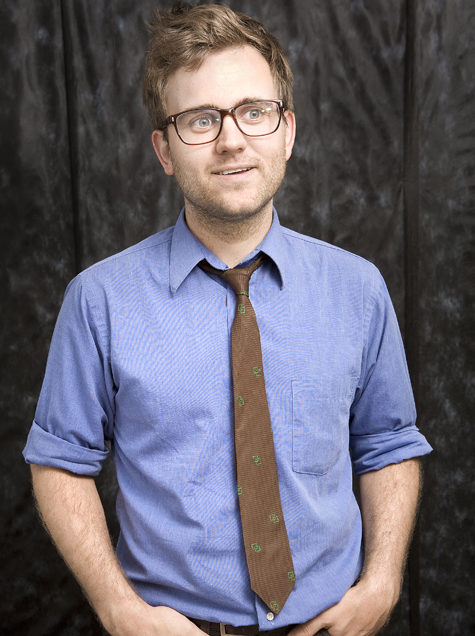
Getting It Done
Appetite’s Teddy Briggs foregoes waiting for a label and releases his latest album on his own
In the least dramatic of interpretations possible, Teddy Briggs would rather devote his time to creative outlets over the necessary habit of satisfying his stomach. While all your friends are becoming foodies, getting off on the exhilarating release of flavor, Briggs is busy denying himself sustenance while writing songs about being over food.
Appetite is the solo project of Teddy Briggs, drummer of What’s Up?. He totally understands the irony of his moniker, but it’s not deliberate. It just came together the way things do sometimes, much like the title of his new record, Scattered. Smothered. Covered. The inspiration for the title lies in Southern slang for how you like your hash brown potatoes. “I feel those words represent different ways I feel,” he said. “Covered, not meaning covered up, but meaning I’m covered, like, ‘You’re good.’ Feeling scattered and feeling smothered, but also feeling like you’ve got everything together is more or less the same thing. Those emotions are happening so often for me at the same time. It just spoke to me.”
Briggs discovered the slang while out to breakfast with a friend from the south in San Francisco. He told her during that meal his next album would bear the name. “Instead of trying to rethink it when the album was made, I stuck to that thought,” he said. “I think it’s very applicable to the record.”
One listen will confirm the applicability of the title, as Appetite drifts from the tropicalia vibes of “Warn Me, Right,” that might gather comparisons to the trend toward prep school-afrobeat, to the American-born indie stomp of “Tussy.” Appetite could get critical nod to contemporaries such as Sufjan Stevens, Vampire Weekend and Andrew Bird, but is by no means eating from their silver plates and sampling their wines. Scattered. Smothered. Covered. is far too mature and calculated for such novice missteps.
The first Appetite record, called The Ambiguous Garment, was released on Obstructive Vibrations, a local label run by Briggs’ band mate from What’s Up?, Robby Moncrieff. Unfortunately the label is in hibernation, as Moncrieff is engulfed in a multitude of projects, letting the website remain dormant. It’s excusable, considering Moncrieff recorded Briggs’ record, provided guidance in the studio and shopped it to a few labels who heard the record, but didn’t bite.
Briggs said he’s gotten positive feedback from people he said “don’t really owe me anything” and friends alike. He admitted to not pushing hard due to a lack of industry contacts, so for now it’s the DIY route. “I’m sick of not having anything at shows for people to take home,” he said, which is why Briggs is self-releasing Scattered. Smothered. Covered. on Bandcamp.com the day of his release show and bringing along CD-Rs to sell. “If someone wanted to do an actual release on a label, that’d be great,” he said. “But I’m not going to wait.”
Briggs considers Obstructive Vibrations more of a stepping stone for musicians than a label that is interested in career-building. It’s a fitting analogy, as his debut in comparison to Scattered. Smothered. Covered. is a weirdo introduction that garnered enough interest for Briggs to take the project seriously and tighten up the sound to a more mature level than freak-folk songs about crack for hippies. “All that old shit was pretty ambition-less,” he said. “It was just what I’d do for fun. At that point it was never a project that I really wanted to perform.”
Briggs is a drummer by trade, a trait that is denied in his work as Appetite. Briggs felt complimented when I expressed that the record did not sound as though it was made by a drummer–not trying to dis, but you won’t mistake Appetite for a Zach Hill side project. Briggs plays all the instruments on the record (recorded in five days at Hangar Studios), save for a few. “[Robby] was inspired by what I was doing live, which is super stripped-down,” Briggs said. “We left out the sound bytes and weird recordings. He was the one that kept me from putting in a fifth vocal track and said, ‘This is fine.’”
Now that Appetite is becoming a band meant for live interpretation, Briggs is coping with the adjustment of hearing someone else play his songs, kind of like a toned-down Brian Wilson mania. “Since I played everything, I have a very specific thought and sound I want it to be in my head,” he said. “That is just not going to happen with other people playing. I’m not saying they wouldn’t do their jobs and bring their own thing to the table, but it’s still an awkward feeling.” As serious as Briggs is taking Appetite, he’s not at a point of pressuring band mates to sign on in blood or even have the “are you in or are you out” conversation. “I think that’s better for everybody,” he said.
“Over Food” is the parting ballad on the album, which ties into the unplanned, yet undeniably heavy-handedness of Appetite’s food theme, a frustration that Briggs is quick to point out himself. “I have a weird relationship with food,” he said. “I enjoy food. I like the way it tastes. I also find eating to be a chore. You have to eat in order to continue being productive. Eating is fuel. I eat fast and get it done.”

